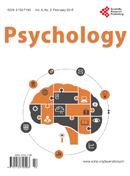Stress Management Based on Trait-Anxiety Levels and Sleep Quality in Middle-Aged Employees Confronted with Psychosocial Chronic Stress
Catégories
Mots-clefs
Catégories
Mots-clefs
Stress Management Based on Trait-Anxiety Levels and Sleep Quality in Middle-Aged Employees Confronted with Psychosocial Chronic Stress

A stress management program using cardiac coherence was implemented after an organizational down-sizing. The study was conducted in nine voluntary workers in order to evaluate the efficiency of the program. A baseline evaluation was conducted on psychological variables (anxiety, perceived-stress, well- being and sleep), endocrine assessments (urinary cortisol excretion, alpha-amylase and salivary concentrations) and physiological recordings (sleep and heart rate variability). The low number of participants was due to the intrusive approach in collecting physiological and endocrine variables. The program consisted of ten sessions of cardiac coherence training during a 3-month follow-up period. At the end of the training sequence, subjects were once again exposed to the same evaluation battery. A decrease in perceived stress and a subsequent increase in well-being were observed. Sleep quality improved as suggested by the results of the subjective and objective measurements. For the entirety of the results, improvements were higher in subjects with high vs. low trait-anxiety scoring. The pattern of results for subjects prone to a high level of trait-anxiety suggested that stress and sleep are related to each other in a bidirectional way: increased anxiety is associated to poor sleep and stress reduction improves both anxiety and sleep. On thebasis of these results, we suggest that trait-anxiety can be used as an indicator of which employees should be given priority for stress management intervention. We will also highlight the interest of operationally physiological recordings, used outside the laboratory, for measuring objective improvements due to this stress management intervention, as quality of sleep.
Télécharger la publication complète, Cliquez ici